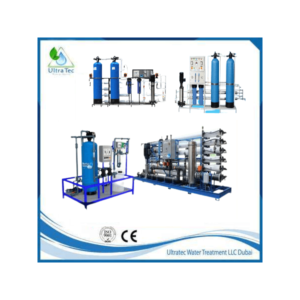You might be unsure what makes some sand and gravel better than others. This guide will help you understand what sand & gravel really are, how they’re used, and what to check before buying. I’ve worked in construction supply and landscaping for years, seen what works (and what wastes money), and want to share that with you.
What Exactly Are Sand And Gravel?
Sand and gravel are types of aggregates—natural rock fragments, weathered or broken down, used in many building, industrial, and landscaping projects.
-
Sand: very fine particles, often quartz or similar minerals, varying sizes, used for mixing, filtering, leveling, plastering etc.
-
Gravel: larger rock fragments, rounded or angular, often used for structural base, drainage, decorative paths etc.
Why Sand And Gravel Are Important Products
From my own experience, people often under-estimate how much good aggregate shapes the success of a project. Here are key benefits:
-
Structural strength: In concrete mixes, the right gravel helps reinforce, reducing cracks. Sand fills voids, giving stability.
-
Drainage & filtration: Gravel promotes water flow; sand in filters traps fine particles. I once saw a drainage base fail just because coarse gravel was wrong size—water pooled, foundation weakened.
-
Cost-effectiveness: Sand & gravel are often cheaper than fabricated or synthetic alternatives for many uses—driveways, paths, fill material etc. Using local sand/gravel cuts transport cost.
-
Versatility: Landscaping, concrete, asphalt, decorative uses, filtration, metal casting—sand & gravel are used in all these.
Types / Grades of Sand & Gravel
It helps to know the varieties so you don’t pick the wrong one.
| Product Type | Common Use | Key Properties to Check |
|---|---|---|
| Concrete Sand | Foundations, slabs, concrete mixes | Coarse grains, minimal fines, proper moisture, shape (angular is better for strength) |
| Masonry / Plaster Sand | Mortar, plaster, rendering | Fine particles, smooth texture, clean (no clay or organic matter) |
| Decorative Gravel | Garden paths, driveways, landscaping | Size, color, shape (rounded vs angular), durability, stability under load |
| Drainage Gravel | Under slabs, pipes, French drains | Size distribution (bigger stones at bottom), permeability, angular shapes to allow flow |
Common Uses of Sand & Gravel
Here’s what you can do with a well-chosen sand and gravel mix. I’ve seen these put to good use many times in my work.
-
Concrete and Mortar Mixes – primary use. Without the right sand and gravel mix, concrete won’t achieve strength or durability.
-
Road Bases & Pavements – gravel provides support, sand helps base leveling.
-
Drainage Systems & Water Treatment – sand for filtration beds; gravel for percolation and water passage.
-
Landscaping & Outdoor Features – paths, garden edging, decorative features. Gravel looks nice; sand can smooth surfaces or fill gaps.
-
Industrial Applications – glass making (silica sand), foundry sand for metal casting, abrasives, etc.
How To Pick Good Quality Sand And Gravel
Here’s what I always check before buying. You should too.
-
Particle size & grading: Uniform distribution leads to better compaction and strength.
-
Cleanliness: No clay, silt, organic matter—these weaken mixes and cause weak spots.
-
Shape and angularity: Angular gravel interlocks better for structural work. For decorative, rounded shapes may look better.
-
Source & consistency: If use is large, ensure the supplier has consistent quality. I’ve had projects where gravel from two batches looked similar but behaved differently under load because they came from different pits.
-
Moisture content: Too wet wastes mix ratio (more water needed), too dry may be dusty and hard to work.
-
Cost and transport: Closer source, cheaper delivery; balance quality vs cost.
Pros & Cons
Here are trade-offs—nothing is perfect, so better you know:
| Pros | Cons |
|---|---|
| Good strength, low cost per volume, natural material, many uses | Variability in quality, impurities risk, extra work in screening/washing, transport cost if far, sometimes unsightly (for decorative work) |
Some Real-Life Examples
-
I once had a driveway that kept cracking. Got a more angular, properly graded gravel base; cracks reduced, longevity improved.
-
At a filtration plant job, using coarse sand first then finer sand layers worked way better than just one kind—less clogging, maintenance easier.
-
For a garden path, I chose light-colored decorative gravel; it looked beautiful but I had to clean weeds more often. Trade-off.
What to Consider When Ordering
-
Quantity needed (in cubic meters or tons)
-
Delivery method & timing (on-site access, offloading)
-
Whether supplier can provide certified material/lab report
-
Local environmental rules (some places restrict sand mining etc.)
-
Long-term durability (look for weather resistance, hardness)
Summary & What You Should Take Away
You’ve seen what sand and gravel are, why they matter, and how quality affects outcome. Before buying, think about the project’s strength needs, drainage, aesthetics, cost, and supplier reliability. If you’re careful, you’ll avoid wasted materials, weak structures, and unnecessary cost. You’ve got the knowledge now—use it well.
INDUSTRIAL RO PLANTS

An industrial RO plants are water purification system that uses reverse osmosis to remove impurities from water. The benefits of using an industrial RO plant include improved water quality, better-tasting water, and longer-lasting appliances. Additionally, customers will save money on their water bills each month.
Product Brand: Ultratec
Product Currency: aed
Price Valid Until: 2030-06-14
Product In-Stock: InStock
5



